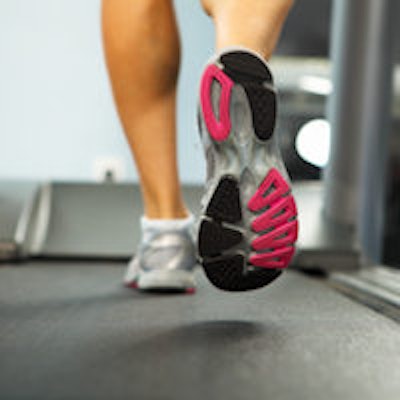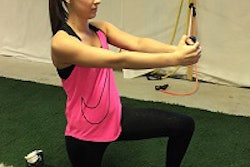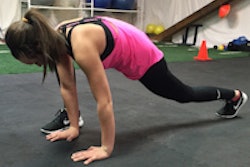
If you've read our articles in the past, you know we speak about doing the right moves within an exercise program. By doing the right moves at the right times, you can live a pain-free life. One element we want to discuss -- and it's a vital component to achieving work-life balance, play-life balance, and an all-around feeling of health and wellness -- is the rest, recovery, and regeneration part of a training program.
We find that the "3Rs" of rest, recovery, and regeneration are limiting factors that can make it difficult to achieve some of the prescriptions in our Live Pain Free program.
In this article, we want to cover some of the basics for you to achieve better results from the time you put into your Live Pain Free program, whether it's five to 10 minutes a few times a week or 45 to 60 minutes four to five times a week. The 3Rs are essential for you to see the best results.
Sleep
Sleep is a critical part of recovery. Most folks need seven to nine hours of sleep every night beginning and ending at about the same times. Too much sleep, too little sleep, or long naps can inhibit the body's ability to adapt to the stresses of work, life, and training. Deep sleep will encourage the release of hormones for the recovery of muscles, tendons, and ligaments, as well as the immune system.
Lighter sleeping stages help reinforce neural patterns stimulated during training sessions. Drugs, alcohol, environmental changes, delayed bed times, and illness can all disrupt normal sleeping patterns and recovery.
So, it's important to try to get the same amount of sleep each night, and to go to bed and get up at about the same time. Doing so will give you huge benefits in terms of feeling better and getting rid of stress and pains that can be associated with fatigue.
General post-training strategies
Ten to 15 minutes in a swimming pool with a regimen consisting of large, general movements of the body can relax, refresh, and speed the recovery process. A three- to four-minute hot tub session alternated with a 30- to 60-second cold plunge, repeated for three reps, can greatly foster the recovery process. For relaxation, end with a warm environment that will encourage sleep. For recovery between training sessions, end with a cold bout. The cold tub should not exceed 10° C (50° F).
Specific post-training strategies
There are a number of different types of post-training fatigue, all of which have different recovery strategies.
Metabolic fatigue
Metabolic fatigue is typically volume-related, such as by training for longer than an hour or doing multiple training sessions back to back. It can also be caused by the overall cumulative effect of fatigue. Rehydration and refueling immediately after training can help with recovery. Aim to take in some amount of drinks and food within a 20-minute window. Metabolic fatigue can be recognized by the early onset of fatigue, when normal training seems more difficult or you struggle to complete a session.
Neural fatigue of the peripheral nervous system
Also volume-related, this type of fatigue is caused by high-intensity sessions or long, low-to-moderate sessions of training. Hydrotherapy, light active and static stretching, and massage can help with recovery. Neural fatigue is expressed by low power output, heavy/slow feet, and poor technique.
Neural fatigue of the central nervous system
This type of neural fatigue is caused by low blood glucose levels brought on by high-pressure training sessions that involve rapid decisions and reactions, or just training monotony. It is characterized by a lack of motivation or passion and can be treated with a steady intake of carbohydrates during and after training, as well as rest and alternative activities such as music, movies, or video games.
Psychological fatigue
Psychological fatigue can be caused by team conflict, competitive pressures, or other outside stressors such as school and personal conflicts. This type of fatigue is expressed by loss of confidence and/or lowered self-esteem, poor interaction and communication among team members, negative attitudes, increased anxiety, and poor sleep patterns. Activities such as reading, watching movies, playing video games, etc., can help.
Environmental and travel fatigue
This is caused by the disruption of normal routines, such as sleep patterns, meal timing, sitting or standing requirements, cultural practices, climate, and time zone. The fatigue is usually expressed via longer warm-up needs and slower starts to the workout, greater unforced errors in early competition, and earlier onset of fatigue.
Strategies to alleviate this type of fatigue involve proper preparation and planning for training and travel. This includes adequate hydration and refueling patterns; limiting climate stressors, such as extreme heat or cold; minimizing visual fatigue with sunglasses and limited computer time; and minimizing hearing fatigue by wearing earplugs on long flights and limiting loud music on MP3 players.
Post-training recovery schedule
Immediately afterward:
- Restore fluid and glycogen levels by drinking 0.6 L to 1 L of sports drink
- Eat quality protein and a low-glycemic carbohydrate snack
- Stretch lightly with active and short-duration static stretches (10 sec or less)
- Walk or jog lightly to assist lactate recovery
- Check weight to gauge sweat loss
- Listen to relaxing music
At home:
- Continue to rehydrate and refuel
- Shower and end with alternate hot/cold sessions (30 sec each, three to five repetitions)
- Eat a balanced meal of quality protein and low- to moderately glycemic carbohydrates
- Use a relaxation technique or music to unwind
In the evening:
- Take a bath to relax
- Do long stretches and/or proprioceptive neuromuscular facilitation (PNF) stretching
- Use self-massage techniques -- foam roller, tennis balls, etc.
Preparing for bed:
- Incorporate visualization and/or relaxation techniques
- If unable to sleep, get up and jot down the problem or make a list
Next morning:
- Monitor your body, including respiration and heart rate, as well as how you feel
- Weigh in
- Record in your training journal
We hope this article gives you some insight into how to apply the science of recovery and regeneration. It's easy to read about, but it can be very difficult to put into practice.
Doug Wuebben is a registered echocardiographer and also a consultant, international presenter, and author of e-books in the areas of ergonomics, exercise and pain, and injury correction for sonographers. He has also been published on the topics of telemedicine and achieving lab accreditation. Mark Roozen is a certified strength and conditioning specialist, a certified personal trainer, and a fellow of the National Strength and Conditioning Association (NSCA). He has been in the strength, conditioning, and performance field for over 28 years. Wuebben and Roozen are co-founders of Live Pain Free -- The Right Moves. Email [email protected] or go to coachrozy.com for more information on programs or speaking requests or if you have any questions or comments.
The comments and observations expressed do not necessarily reflect the opinions of AuntMinnie.com.



















